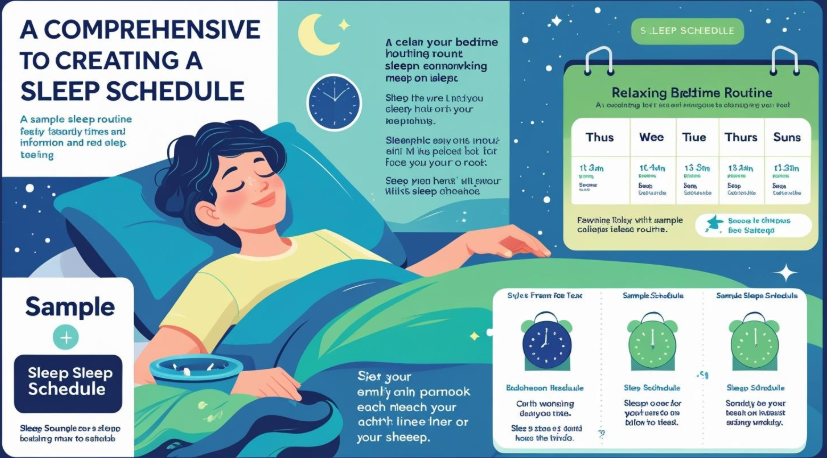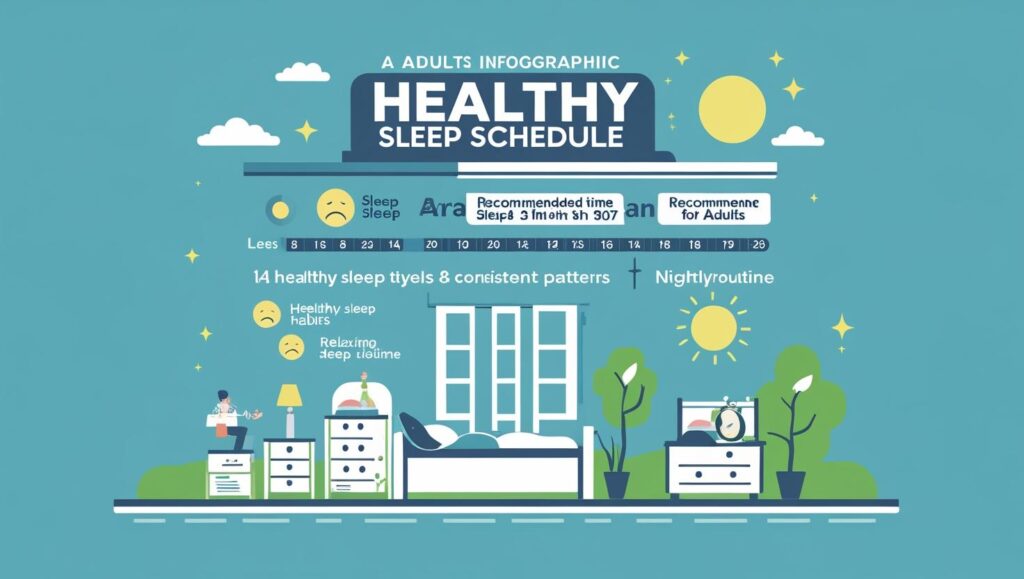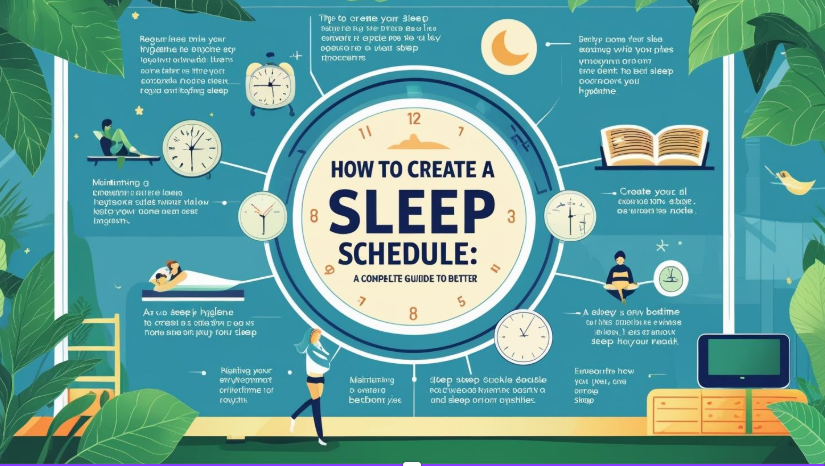Sleep is one of the most crucial pillars of a healthy lifestyle. Yet, in our fast-paced world, sleep often takes a backseat. Whether you’re a student pulling all-nighters or a professional juggling work and family, poor sleep habits can negatively impact every part of your life. The good news? You can take control by learning how to create a sleep schedule that suits your body and lifestyle.
In this comprehensive guide, we’ll teach you step-by-step how to create a sleep schedule that works, stick to it, and finally wake up refreshed every morning.

Why You Need a Sleep Schedule
Before we dive into how to create a sleep schedule, let’s understand why it’s essential. Your body operates on an internal clock known as the circadian rhythm. This natural cycle tells your body when to sleep, wake, eat, and function at its best. When you go to sleep and wake up at inconsistent times, it confuses your circadian rhythm, leading to:
- Trouble falling asleep
- Daytime drowsiness
- Mood swings
- Weakened immune system
- Reduced concentration
By choosing to create a sleep schedule, you’re helping your body reset and operate efficiently.

Step-by-Step: How to Create a Sleep Schedule
1. Decide How Much Sleep You Need
Most adults need 7–9 hours of sleep every night. Teenagers need 8–10 hours, while children may need even more. To create a sleep schedule, first identify how many hours your body needs to feel rested.
2. Pick a Consistent Wake-Up Time
Always start with your wake-up time—not your bedtime. Choose a time you can maintain every day, including weekends. If you wake up at 7:00 AM, stick to it, even on holidays. This regularity will reinforce your sleep cycle.
3. Count Back to Find Your Ideal Bedtime
Now subtract the hours of sleep you need from your wake-up time. If you want 8 hours of sleep and plan to wake up at 7:00 AM, you should go to bed by 11:00 PM. This is a critical step when you create a sleep schedule.
4. Adjust Gradually
If your current sleep time is far from your goal, adjust slowly. Shift your bedtime or wake-up time by 15–30 minutes every night until you hit the desired time. This slow adjustment is healthier and more sustainable.
5. Establish a Bedtime Routine
A consistent routine signals to your brain that it’s time to wind down. Here’s what a good pre-sleep routine might include:
- Turning off screens 30–60 minutes before bed
- Reading a book
- Meditation or breathing exercises
- Taking a warm shower
- Dimming the lights
Doing this regularly helps you create a sleep schedule that feels natural.
6. Avoid Stimulants and Screens Before Bed
Caffeine, alcohol, nicotine, and blue light from screens can all delay your sleep. Try to avoid them at least 2 hours before bedtime to help your body wind down properly.
7. Make Your Sleep Environment Comfortable
You can’t effectively create a sleep schedule if your bedroom environment is working against you. Ensure:
- Your bed is comfortable
- Room temperature is cool (60–67°F)
- The room is dark and quiet
- You use white noise or earplugs if necessary
8. Use Sleep Tools and Apps
If you’re struggling, there are many sleep tracking apps and wearable devices that can help you analyze your sleep pattern and recommend how to create a sleep schedule tailored to your needs.
9. Be Consistent, Even on Weekends
Tempted to sleep in on weekends? Don’t. Consistency is crucial when you’re trying to create a sleep schedule. Sleeping in disrupts your internal clock and makes Mondays even harder.
Benefits When You Create a Sleep Schedule
When you finally create a sleep schedule and stick to it, you’ll notice some incredible changes in your life:
- More energy during the day
- Better mood and reduced anxiety
- Improved memory and cognitive performance
- Healthier immune system
- Balanced hormones and metabolism
- Reduced risk of chronic diseases like diabetes and heart conditions
It’s no exaggeration—when you create a sleep schedule, you change your life.
Common Mistakes to Avoid
Even with the best intentions, people often fail because of these mistakes:
- Oversleeping on weekends: This resets your sleep clock in a bad way.
- Using your bed for work or eating: This confuses your brain about what the bed is for.
- Napping too long: Avoid naps longer than 30 minutes, especially after 3 PM.
- Changing your routine frequently: It breaks your progress and affects consistency.
Avoiding these pitfalls can ensure long-term success when you create a sleep schedule.

What If You Need to Reset Your Schedule?
Sometimes you need to completely shift your sleep timing—due to a new job, travel, or lifestyle change. To create a sleep schedule from scratch or reset it:
- Use morning sunlight to signal your brain it’s time to wake
- Avoid screens at night to produce melatonin naturally
- Try melatonin supplements only after consulting a doctor
- Be patient: it takes 1–2 weeks to reset your internal clock
Anyone can learn to create a sleep schedule, but the magic lies in consistency. It may be difficult at first, but your body will thank you for the discipline. Over time, waking up early and going to bed on time won’t feel like a struggle—it will feel natural.
So take control of your nights and days. Follow this guide, stay committed, and you’ll soon find yourself sleeping better, living healthier, and performing stronger.